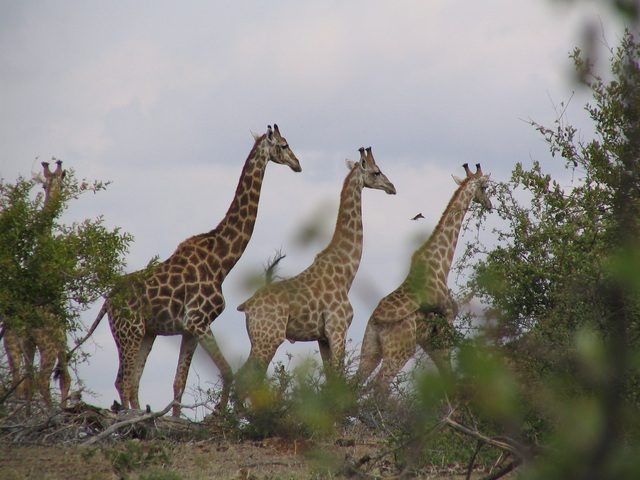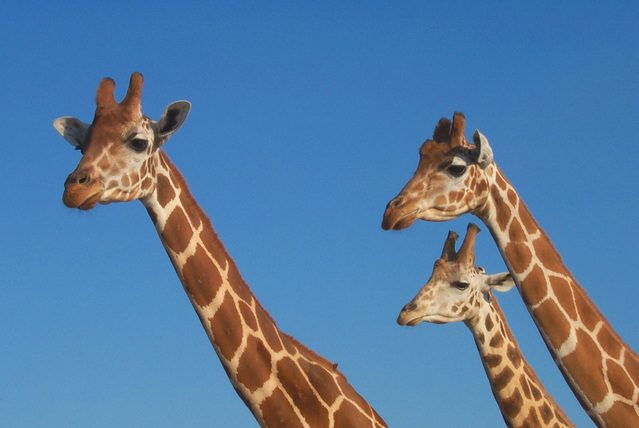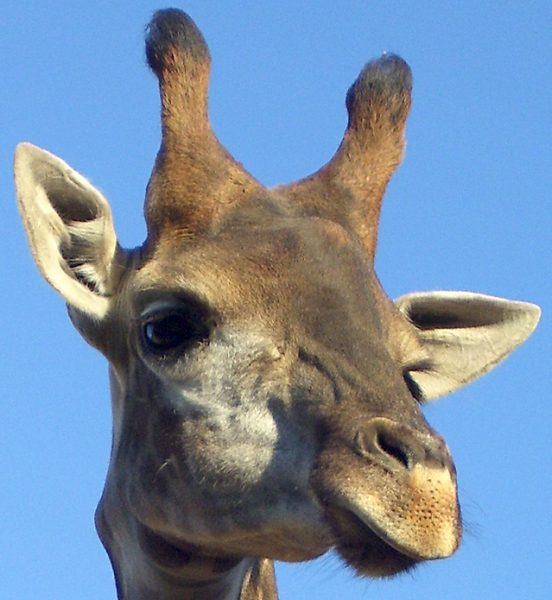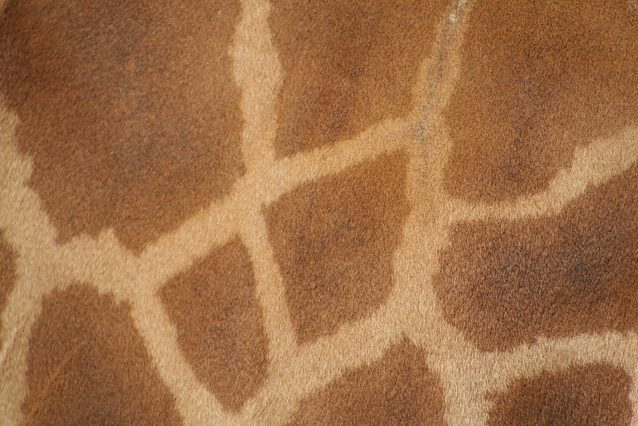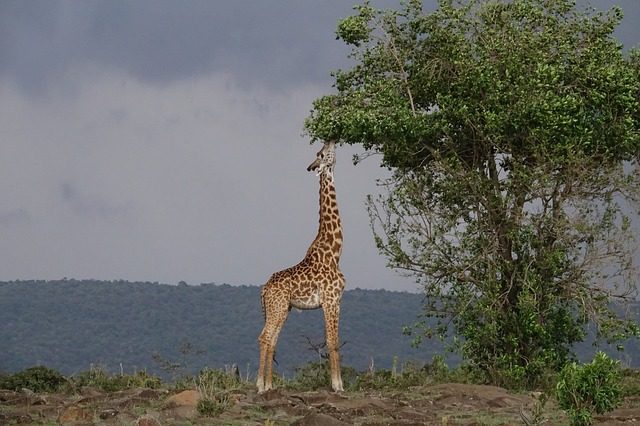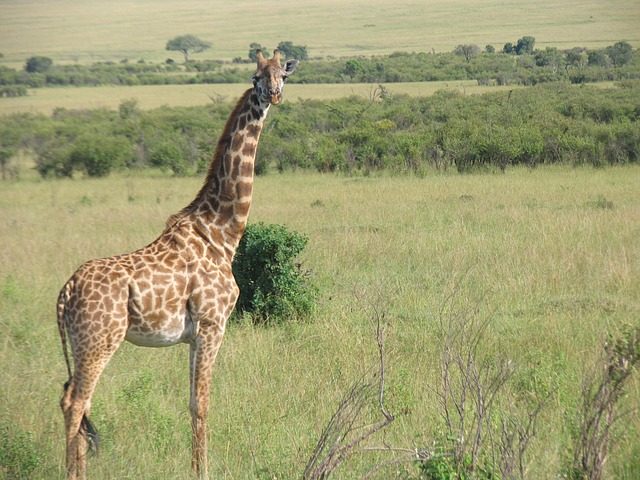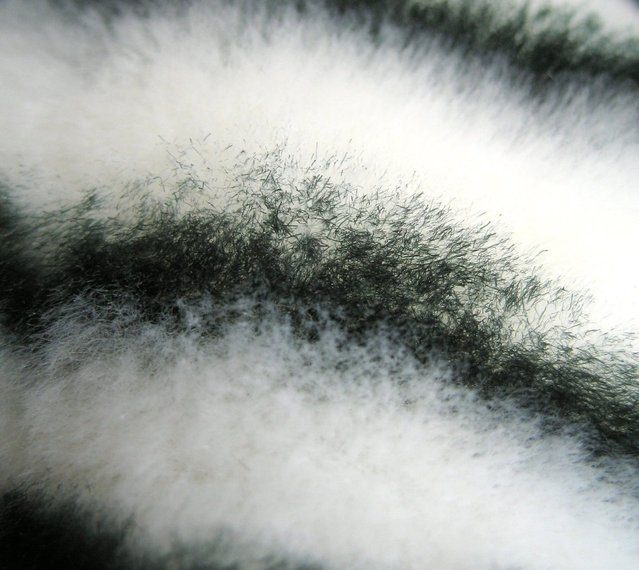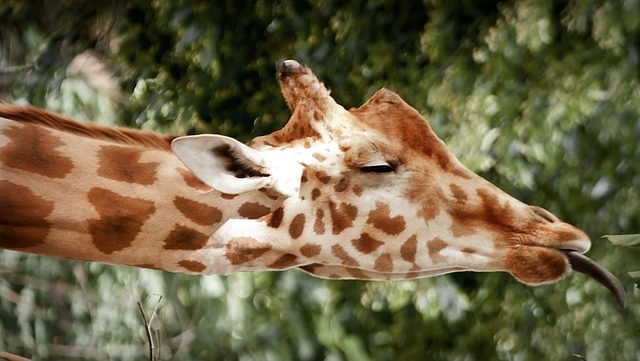Distinct Features Of Giraffes In Kenya
The neck of a giraffe is an easily recognizable feature because it is very long. Its length makes them seem almost surreal. It has seven cervical vertebrae, each one 25 cm long. They put them to use when battling with other giraffes for mates and territory, as well as when picking food from tall trees. Another interesting physical feature of a giraffe is its horns that are called ossicones. They are covered in skin and formed from ossified cartilage. But the skin on the giraffe’s body produces an unpleasant smell. While no one knows what accounts for its long necks, there are enough studies done on ossicones and plausible explanations given as to what causes the stink. The characteristic long necks, ossicones and stinky skin are shared by all the different subspecies of giraffes although they have subtly different coat patterns.
Neck to battle
The adorable image of giraffes rubbing their necks together has been used on many Valentine’s Day card. Although, it gives the impression of companionship and intimacy, the practice is far from friendly. It is an elaborate fighting called necking, which involves repeatedly rubbing, twisting, swinging, entangling and banging its powerful neck to deliver massive head-butts to their male rival’s body until one surrenders. It’s done by males as a test of strength to earn the privilege of mating and the winner gets access to estrous females. The longer the neck and heavier the head, the greater the force.
Neck to feed
The necks are also used to feed. Giraffes have no competition in the wild as far as finding food is concerned because their long necks help them eat in a place that other mammals can’t reach, the treetops. They use the long necks to reach to the leaves in the tall trees. So, when food is plentiful up in the trees, they will eat that first instead of the grass on the ground, so that other herbivores can browse the grasslands.
Baffling long neck
The explanation about why giraffes have such a long neck still baffles scientists. The scientific community has never accepted any of the hypotheses or theories as conclusive or definitive. Some posit that one of the evolutionary factors of the long neck could be that it gives its body a high surface area, which helps it lose heat more efficiently. The Darwinians would say that the length of the neck is a product of sexual selection. The studies underway might soon be able to determine that.
Blowing their horns
Giraffes are born with horns, but are not attached to the skull and lie flat to avoid injury at birth. The horns fuse with the skull only later in life. They are used by scientists as one of the reliable methods to identify its sex. Females have tufts of hair on top of the horns. Males tend to be bald on top as a result of the effect of necking, a combat with other males. The calcium deposits that form large head bumps as they age, give the appearance of three further horns.
Unpleasant smelling skin
Giraffes are known for being an unpleasant smelling creature. They are pretty bad at grooming because of their long necks. The smell comes from their parasite repellent rich fur. The skin under the impressive and inspiring patterned coat secrete chemicals to disinfect it so that it repels insects and stops fungi and bacteria from growing under its skin. But this leaves their skin smelling unpleasant to humans. Some mature giraffes are so saturated with the smell that people call them stink bulls.
Spotty coat patterns
Giraffes have distinctive coat pattern style that cover their entire bodies except underbellies. They stand out in some a bit more than the others. While the patterns in a giraffe skin are shades of brown and cream, the colors vary by subspecies. The differences in the color tend to reflect the vegetation color in the area the subspecies live. They vary not only in color but also in size, shape and separation between the spots in each species. When it gets hot, it can pump blood into the patches which acts as thermal windows to release body heat. Giraffes use the spots not only to regulate its body heat but also to blend in and recognize each other. Recently it was discovered that the shade of the patches can be used to determine the age of the male giraffes as well.
Mixing with nature
The giraffe coat pattern serves as a disruptive camouflage. It helps in hiding the boundary of the animal in the dappled shadow of an acacia tree. With the spots, they blend in with the patterns of shadow and light that the savannah woodlands cast beneath their favorite acacia trees.
Identifying with print
Spots distinguish one giraffe from the other because each of them have a unique pattern. Within those styles, each of them has its own distinct design that serves as a unique identifier just like the human fingerprints. Researchers use these patterns to identify individual giraffes both in captivity and in the wild. The spots are also a way to help the giraffes recognize each other and tell them apart.
Patching with age
A male giraffe’s spots give away its years. The shade of its brown patches can be used to ascertain its age. Male giraffes become more illustrious as they age and it’s the level of darkness in its brown blotches that reveals its age. The older the giraffe, the darker the patches. Prof. Fred Berkovitch from Kyoto University in Japan partnered with local naturalist Phil Berry and conducted a 33-year research on male Thornicroft giraffes from northern Zambia to study the link between the giraffe’s age and its patches. The study reviewed a series of observations recorded from the 1970s by a park ranger.
Studies on ageing
The findings of the study, published in the Journal of Zoology, reveals that the age of a male giraffe can be estimated by just looking at the color of the patches in their coats. The hairy blotches on them darken after seven years of age starting from the center slowly extending outward to the edges. They start getting darker around the time of puberty. They turn from sienna brown to coal black by an average age of 10. The shift in the shade, Berkovitch believes, could be associated with changes in testosterone during puberty and can also be used to signal the onset of puberty in giraffes. The 3-decade long record of coat-colour changes also helps establish the fact that the maximum lifespan of Thornicroft giraffe is 22 years.
5 Frequently Asked Questions About Giraffe horns
To receive a colourful digibook about giraffe with videos, images and text, please fill out the following form or simply email us on safaris@safari-center.com

